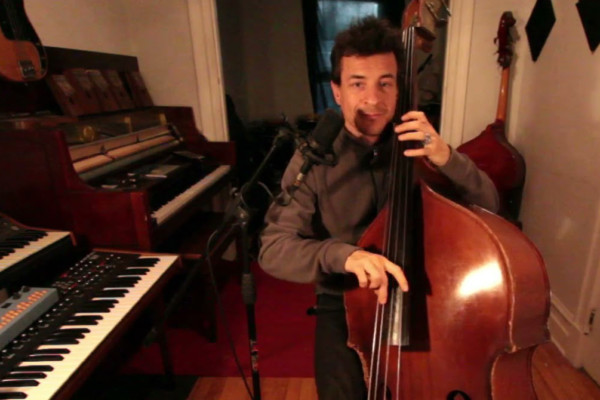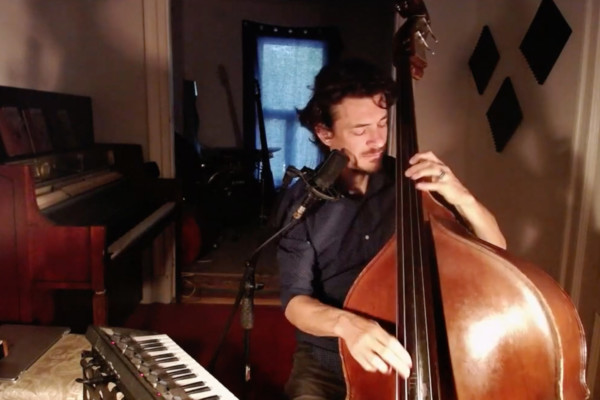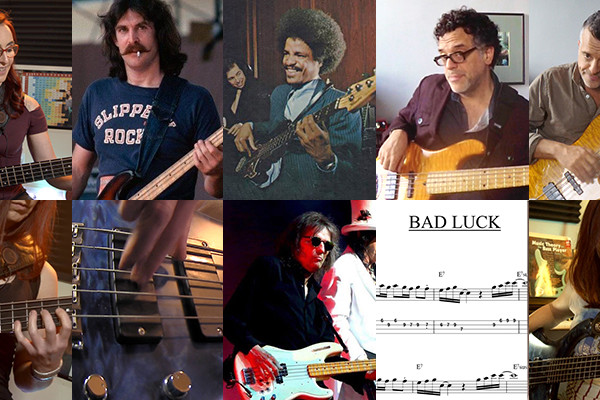Using Triadic Harmony in Solos
The foundation for harmonic structure is the triad. They are the basic chords of Western harmony, and using them in a solo provides a sense of structure and strongly outlines the underlying chords. Do not be fooled into thinking this is some boring drill where you arpeggiate the triads from chords in a lead sheet – there are lots of different ways to utilize these notes.
You must understand triadic harmony for the major and melodic minor keys. A triad is the root, third, and fifth of a scale sequence. Building from the C-major scale you have the following:
![]()
Figure 1: C Major Harmony
Each of these triads is built from the third and fifth of the respective root in the key of C-major. This gives you the following progression of chord types starting from the tonic: major, minor, minor, major, major, minor, diminished. Memorize this! When you practice arpeggiate all of the triads through this sequence in all the keys. You want have instant access to these triads in the different positions on the fingerboard and be able to move freely.
Now let’s take a look at the melodic minor triadic harmony:
![]()
Figure 2: C Melodic Minor Harmony
The order of triads in this sequence is minor, minor, augmented, major, major, diminished, diminished. You should also memorize this sequence of triads – the order is a little easier to remember at first glance (2 major, augmented, 2 minors, 2 diminished).
Here are a few drills to get you on your way to really using triadic harmony in your solos, be sure to use both the major and melodic minor forms:
Exercise 1:
Set your metronome to a reasonable pace and play ascending triplet arpeggios through the major and melodic minor triadic harmony sequences. Here is a video example of playing ascending triplets over the C-major triadic sequence through the different chords.
Video 1: Example playing c-major triad sequences ascending
Exercise 2:
Now that you have a good idea of how to play ascending triads, do the same drill descending.
Exercise 3:
Finally we’re going to put it all together – alternate ascending and descending triplets as you move through the harmonic sequences. Here is a video example where I alternate between ascending and descending triplets for each triad in the C-major sequence.
Video 2: Example playing c-major triad sequences alternating ascending and descending
Exercise 4:
Create different rhythmic variations and chord patterns using only triadic tones as you move through the harmonic sequence. The more variety you can produce the better! Play the triadic notes in any order and even vary the order of the chords in the harmonic sequence.
Exercise 5:
It’s time to break out the lead sheet to your favorite tune. Pick a song you know the chord changes to (from memory) and play through the corresponding triads for each chord. Start slow and do it only as ascending triads, then only descending triads, then use one of the variations you created in Exercise 4. Finally play through the tune using only adjacent triadic tones when you change chords (this means no huge jumps or skips, you play the closest available triadic note). Here’s a basic example over a ii-V-I in C major – the notes are all triadic tones for each of the chords, and there are no jumps:

Figure 3: C major ii-V-I Example
Experiment with different patterns and sequences that you can use over different chord progressions. When you are comfortable using the triadic tones, try adding a chromatic passing tone when you switch chords – see if you like the sounds, if yes then use them, if not try something else.
Exercise 6:
This exercise is the next step towards expanding your use of triads. Starting on C go around the circle of 5ths counter-clockwise e.g. C F Bb… so that you are always moving towards resolution. For each note, play the major triad form but stay within one-octave. This will get you playing different inversions of all the different triads. Once you are comfortable with C, try starting on a different note and play through the other inversions. The following figure shows the octave contained inversions for each major triad moving counter-clockwise around the circle of fifths. Apply the other drills to this sequence as well. Now you’re well on your way to applying triadic sequences into your solos!
![]()
Figure 4: Circle of Fifths Inversions




This helped me a lot to move farther away from stepwise walking to more innovative lines. Thanks Evan!